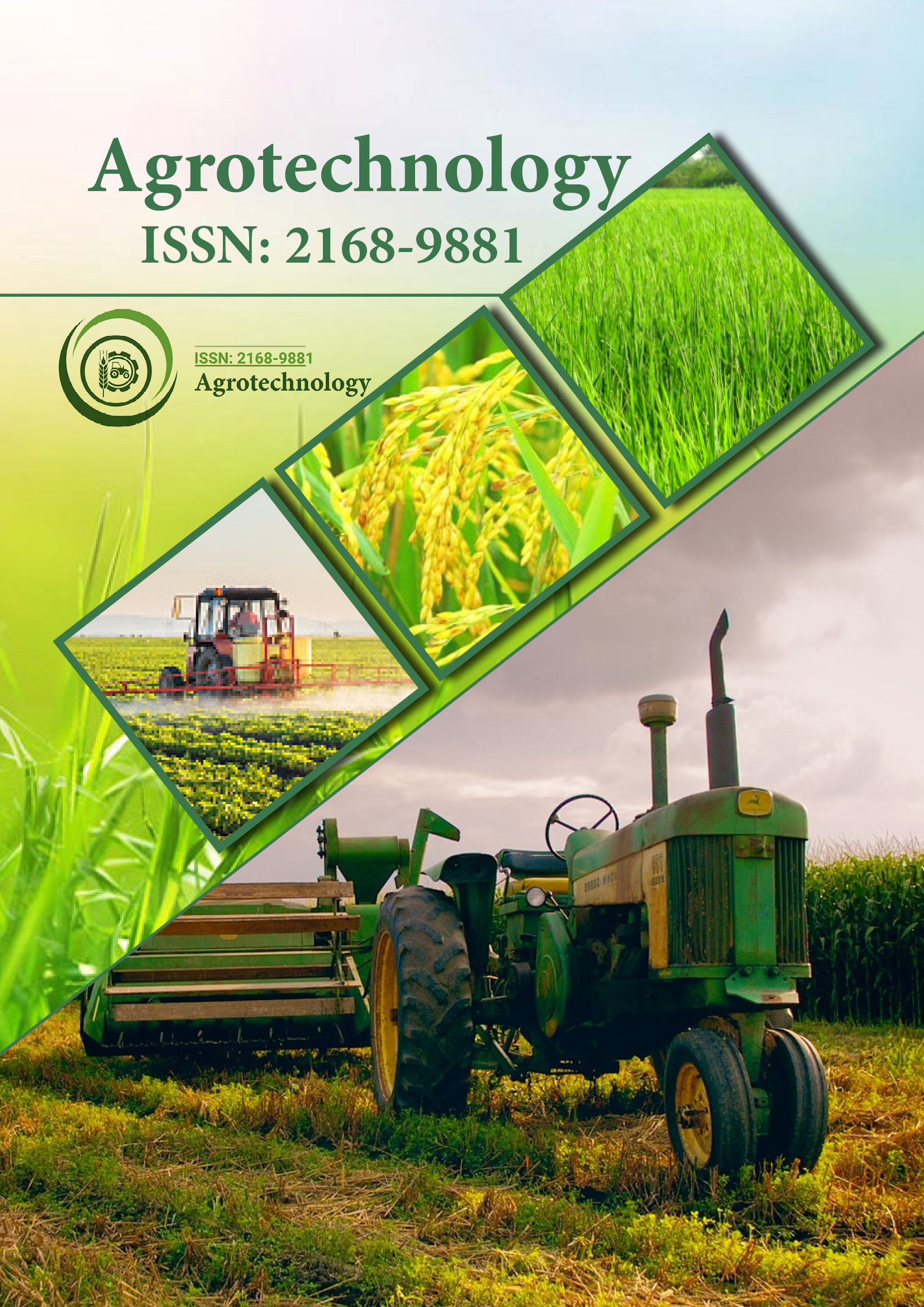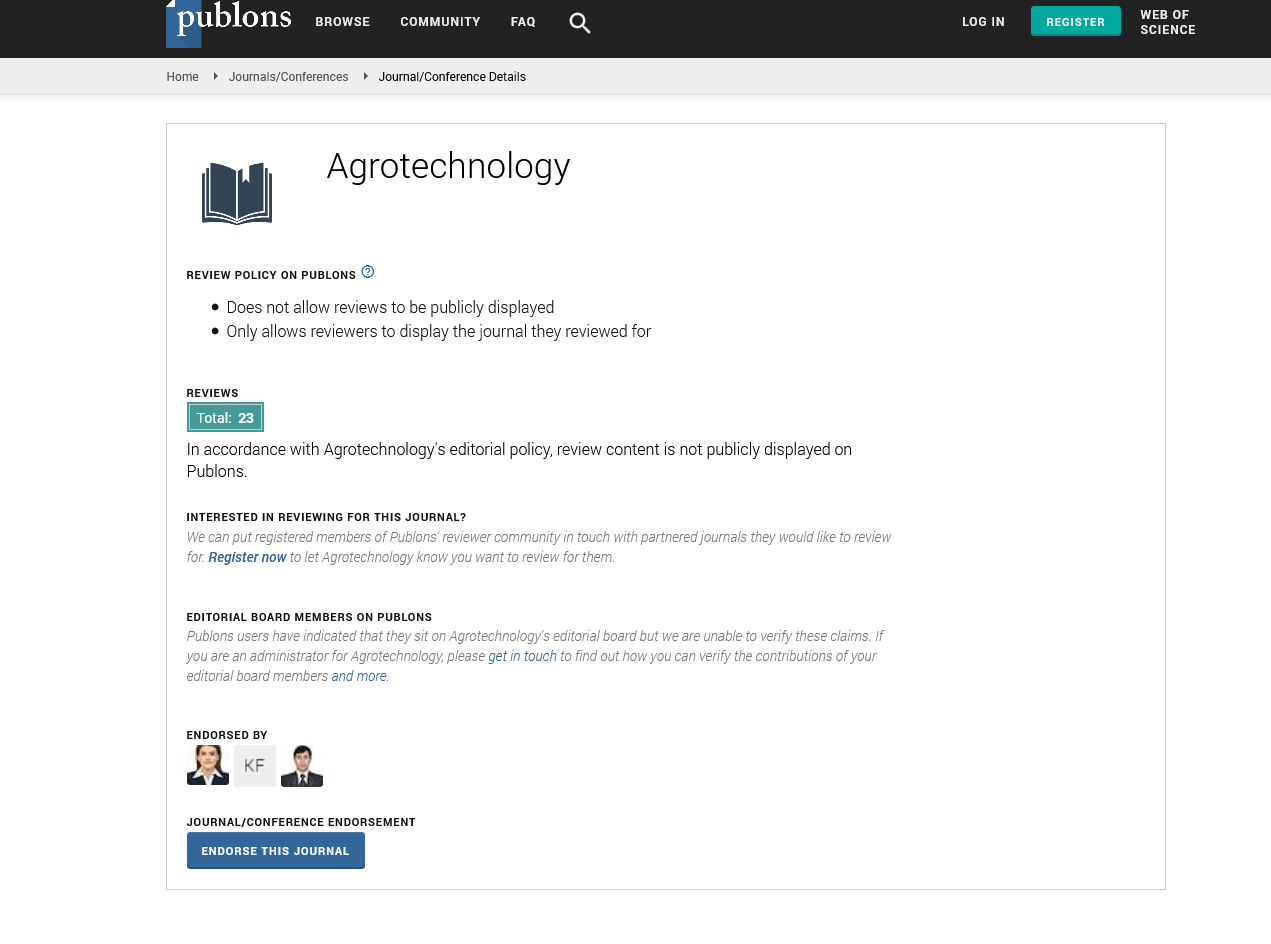Indexed In
- Open J Gate
- Genamics JournalSeek
- Academic Keys
- ResearchBible
- Cosmos IF
- Access to Global Online Research in Agriculture (AGORA)
- Electronic Journals Library
- RefSeek
- Directory of Research Journal Indexing (DRJI)
- Hamdard University
- EBSCO A-Z
- OCLC- WorldCat
- Scholarsteer
- SWB online catalog
- Virtual Library of Biology (vifabio)
- Publons
- Geneva Foundation for Medical Education and Research
- Euro Pub
- Google Scholar
Useful Links
Share This Page
Journal Flyer

Open Access Journals
- Agri and Aquaculture
- Biochemistry
- Bioinformatics & Systems Biology
- Business & Management
- Chemistry
- Clinical Sciences
- Engineering
- Food & Nutrition
- General Science
- Genetics & Molecular Biology
- Immunology & Microbiology
- Medical Sciences
- Neuroscience & Psychology
- Nursing & Health Care
- Pharmaceutical Sciences
Perspective - (2024) Volume 13, Issue 4
Smart Greenhouses: The Intersection of Technology and Sustainability in Agriculture
Ren Yuji*Received: 29-Nov-2024, Manuscript No. AGT-24-27402; Editor assigned: 02-Dec-2024, Pre QC No. AGT-24-27402 (PQ); Reviewed: 16-Dec-2024, QC No. AGT-24-27402; Revised: 23-Dec-2024, Manuscript No. AGT-24-27402 (R); Published: 30-Dec-2024, DOI: 10.35248/2168-9891.24.13.393
Description
Smart greenhouses are transforming agricultural production by integrating advanced technologies to optimize growing conditions and maximize crop yields. Unlike traditional greenhouses, smart greenhouses utilize sensors, automation and data analytics to create a controlled environment where temperature, humidity, light and nutrients are precisely managed. This technology-driven approach addresses challenges in agriculture, such as water scarcity, unpredictable weather and the need for efficient resource use, by creating optimal conditions for plant growth year-round. Through real-time monitoring and automation, smart greenhouses allow farmers to produce high-quality crops with increased efficiency and sustainability.
Central to smart greenhouses is the use of sensors to gather continuous data on environmental factors such as soil moisture, temperature, humidity and light intensity. These sensors collect data and transmit it to central systems where it is analyzed to assess the plants’ needs. For instance, soil moisture sensors monitor water levels in real time, allowing automated irrigation systems to supply water only when necessary, preventing waste and ensuring plants receive precise amounts. This efficient water use is particularly beneficial in regions with limited water availability and allows for substantial conservation compared to traditional methods.
Temperature and humidity control are equally vital in smart greenhouses, where automated systems adjust conditions based on plant requirements. Smart greenhouses are equipped with temperature and humidity sensors that trigger heating, cooling, or ventilation systems as needed. During hot days, automated shading mechanisms or cooling fans activate to protect plants from excessive heat, while heating systems maintain optimal conditions during cooler periods. By creating a stable environment, smart greenhouses minimize the effects of external weather fluctuations, ensuring steady growth rates and healthy plants. This climate control also extends the growing season, allowing for multiple crop cycles and continuous production throughout the year.
Lighting is another area where smart greenhouses excel. Advanced lighting systems, such as LED grow lights, are often used to supplement natural sunlight, particularly in low-light seasons. These lights can be customized to emit specific wavelengths that promote photosynthesis, maximizing growth rates and enhancing plant quality. Furthermore, automated lighting systems adjust brightness and duration according to the natural light available, minimizing energy use while ensuring plants receive adequate light for optimal growth. This targeted approach to lighting allows farmers to grow a broader range of crops and improves yield by providing plants with consistent illumination.
Nutrient management in smart greenhouses is supported by precision irrigation and fertigation systems, which combine water and nutrient delivery into one streamlined process. Fertigation allows for controlled nutrient release directly to the plant roots, reducing fertilizer waste and enhancing nutrient absorption efficiency. Using real-time data from soil sensors, smart greenhouses can adjust nutrient concentrations to meet the specific requirements of different crops, improving growth rates and reducing the environmental impact of fertilizer runoff. This precision approach not only promotes healthy plants but also minimizes the use of chemical inputs, which can be harmful to the surrounding environment.
Data analytics and Artificial Intelligence (AI) further enhance the effectiveness of smart greenhouses. The continuous stream of data collected by sensors is analyzed to identify patterns, predict plant needs and optimize operations. Machine learning algorithms can predict the best times for watering, harvesting, or applying nutrients, based on historical data and environmental conditions. AI can also detect early signs of plant stress, diseases, or pests, enabling preventative actions before issues become severe. By analyzing data trends, smart greenhouses improve decision-making processes, allowing for proactive rather than reactive management, which ultimately increases productivity and reduces operational costs.
Remote monitoring and control capabilities add an additional layer of convenience to smart greenhouse operations. Many smart greenhouses are equipped with internet-connected devices that allow farmers to monitor conditions and make adjustments from anywhere using smartphones or computers. Remote access provides flexibility, enabling farmers to respond to environmental changes quickly and make informed decisions even when they are not on-site. This connectivity streamlines management and increases operational efficiency, as adjustments can be made in real time based on the data received.
Smart greenhouses also enhance sustainability by minimizing waste and reducing the carbon footprint of agricultural production. By optimizing resource use, these systems lower the demand for water, energy and fertilizers, which are often significant contributors to agricultural pollution. The controlled environment limits pest outbreaks, reducing the need for pesticides, while efficient resource management reduces greenhouse gas emissions associated with traditional farming practices. Smart greenhouses provide a scalable model for sustainable agriculture, offering a viable solution to produce food in a way that is environmentally responsible and resource efficient.
In conclusion, smart greenhouses represent a breakthrough in agricultural production, combining automation, data analytics and AI to create efficient, sustainable and productive growing environments. By precisely managing resources and creating optimal conditions for plant growth, smart greenhouses enable higher yields and better quality crops. Their potential for conserving water, reducing energy use and improving nutrient management aligns with the needs of modern agriculture, providing a pathway to meet rising food demands while addressing environmental concerns. As technology continues to advance, smart greenhouses will play a significant role in shaping the future of sustainable agriculture, demonstrating how innovation can enhance productivity and promote ecological balance in food production systems.
Citation: Yuji R (2024). Smart Greenhouses: The Intersection of Technology and Sustainability in Agriculture. Agrotechnology. 13:393.
Copyright: © 2024 Yuji R. This is an open access article distributed under the terms of the Creative Commons Attribution License, which permits unrestricted use, distribution, and reproduction in any medium, provided the original author and source are credited.


